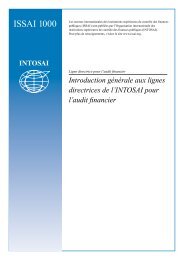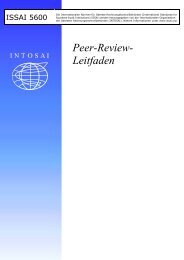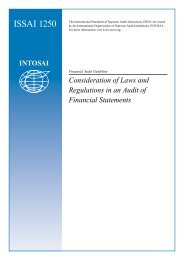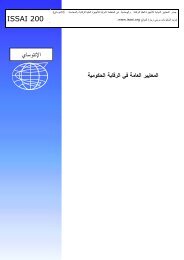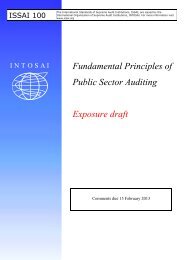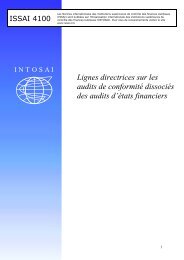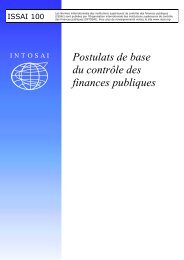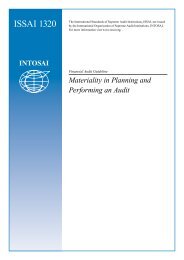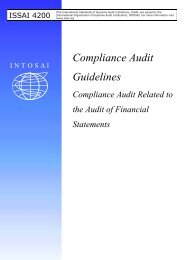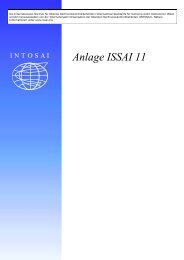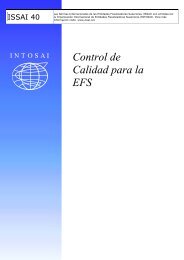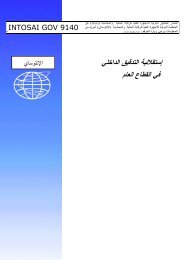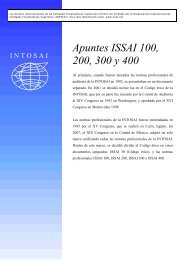ISSAI 1240
ISSAI 1240
ISSAI 1240
You also want an ePaper? Increase the reach of your titles
YUMPU automatically turns print PDFs into web optimized ePapers that Google loves.
<strong>ISSAI</strong> <strong>1240</strong><br />
ISA 240<br />
THE AUDITOR’S RESPONSIBILITIES RELATING TO<br />
FRAUD IN AN AUDIT OF FINANCIAL STATEMENTS<br />
Appendix 3<br />
(Ref: Para. A49)<br />
Examples of Circumstances that Indicate the Possibility of Fraud<br />
The following are examples of circumstances that may indicate the possibility that the<br />
financial statements may contain a material misstatement resulting from fraud.<br />
Discrepancies in the accounting records, including:<br />
• Transactions that are not recorded in a complete or timely manner or are<br />
improperly recorded as to amount, accounting period, classification, or entity<br />
policy.<br />
• Unsupported or unauthorized balances or transactions.<br />
• Last-minute adjustments that significantly affect financial results.<br />
• Evidence of employees’ access to systems and records inconsistent with that<br />
necessary to perform their authorized duties.<br />
• Tips or complaints to the auditor about alleged fraud.<br />
Conflicting or missing evidence, including:<br />
• Missing documents.<br />
• Documents that appear to have been altered.<br />
• Unavailability of other than photocopied or electronically transmitted documents<br />
when documents in original form are expected to exist.<br />
• Significant unexplained items on reconciliations.<br />
• Unusual balance sheet changes, or changes in trends or important financial<br />
statement ratios or relationships – for example, receivables growing faster than<br />
revenues.<br />
• Inconsistent, vague, or implausible responses from management or employees<br />
arising from inquiries or analytical procedures.<br />
• Unusual discrepancies between the entity's records and confirmation replies.<br />
• Large numbers of credit entries and other adjustments made to accounts receivable<br />
records.<br />
• Unexplained or inadequately explained differences between the accounts<br />
receivable sub-ledger and the control account, or between the customer statements<br />
and the accounts receivable sub-ledger.<br />
• Missing or non-existent cancelled checks in circumstances where cancelled checks<br />
are ordinarily returned to the entity with the bank statement.<br />
44<br />
The Auditor’s Responsibilities Relating to Fraud in an Audit of Financial Statements 279



